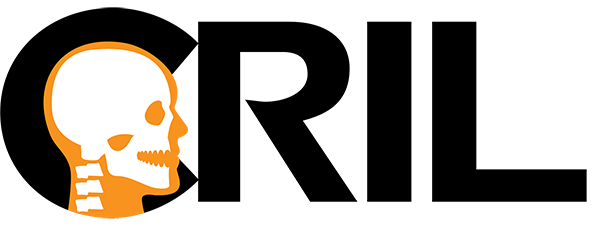Publications
2024
Prieto, Juan Carlos; Miranda, Felicia; Gurgel, Marcela; Anchling, Luc; Hutin, Nathan; Barone, Selene; Turkestani, Najla Al; Castillo, Aron Aliaga Del; Yatabe, Marilia; Bianchi, Jonas; Cevidanes, Lucia
ShapeAXI: shape analysis explainability and interpretability Journal Article
In: Medical Imaging 2024: Imaging Informatics for Healthcare, Research, and Applications, vol. 12931, 2024.
Abstract | Links | BibTeX | Tags: CBCT, cleft patients, Convolutional Neural Networks, ShapeAXI
@article{Prieto2024,
title = {ShapeAXI: shape analysis explainability and interpretability},
author = {Juan Carlos Prieto and Felicia Miranda and Marcela Gurgel and Luc Anchling and Nathan Hutin and Selene Barone and Najla Al Turkestani and Aron Aliaga Del Castillo and Marilia Yatabe and Jonas Bianchi and Lucia Cevidanes},
url = {https://doi.org/10.1117/12.3007053},
doi = {10.1117/12.3007053},
year = {2024},
date = {2024-04-02},
journal = {Medical Imaging 2024: Imaging Informatics for Healthcare, Research, and Applications},
volume = {12931},
abstract = {ShapeAXI represents a cutting-edge framework for shape analysis that leverages a multi-view approach, capturing 3D objects from diverse viewpoints and subsequently analyzing them via 2D Convolutional Neural Networks (CNNs). We implement an automatic N-fold cross-validation process and aggregate the results across all folds. This ensures insightful explainability heat-maps for each class across every shape, enhancing interpretability and contributing to a more nuanced understanding of the underlying phenomena. We demonstrate the versatility of ShapeAXI through two targeted classification experiments. The first experiment categorizes condyles into healthy and degenerative states. The second, more intricate experiment, engages with shapes extracted from CBCT scans of cleft patients, efficiently classifying them into four severity classes. This innovative application not only aligns with existing medical research but also opens new avenues for specialized cleft patient analysis, holding considerable promise for both scientific exploration and clinical practice. The rich insights derived from ShapeAXI’s explainability images reinforce existing knowledge and provide a platform for fresh discovery in the fields of condyle assessment and cleft patient severity classification. As a versatile and interpretative tool, ShapeAXI sets a new benchmark in 3D object interpretation and classification, and its groundbreaking approach hopes to make significant contributions to research and practical applications across various domains. ShapeAXI is available in our GitHub repository https://github.com/DCBIA-OrthoLab/ShapeAXI.},
keywords = {CBCT, cleft patients, Convolutional Neural Networks, ShapeAXI},
pubstate = {published},
tppubtype = {article}
}
Prieto, Juan Carlos; Miranda, Felicia; Gurgel, Marcela; Anchling, Luc; Hutin, Nathan; Barone, Selene; Turkestani, Najla Al; Castillo, Aron Aliaga Del; Yatabe, Marilia; Bianchi, Jonas; Cevidanes, Lucia
ShapeAXI: shape analysis explainability and interpretability Journal Article
In: Medical Imaging 2024: Imaging Informatics for Healthcare, Research, and Applications, vol. 12931, 2024.
@article{Prieto2024,
title = {ShapeAXI: shape analysis explainability and interpretability},
author = {Juan Carlos Prieto and Felicia Miranda and Marcela Gurgel and Luc Anchling and Nathan Hutin and Selene Barone and Najla Al Turkestani and Aron Aliaga Del Castillo and Marilia Yatabe and Jonas Bianchi and Lucia Cevidanes},
url = {https://doi.org/10.1117/12.3007053},
doi = {10.1117/12.3007053},
year = {2024},
date = {2024-04-02},
journal = {Medical Imaging 2024: Imaging Informatics for Healthcare, Research, and Applications},
volume = {12931},
abstract = {ShapeAXI represents a cutting-edge framework for shape analysis that leverages a multi-view approach, capturing 3D objects from diverse viewpoints and subsequently analyzing them via 2D Convolutional Neural Networks (CNNs). We implement an automatic N-fold cross-validation process and aggregate the results across all folds. This ensures insightful explainability heat-maps for each class across every shape, enhancing interpretability and contributing to a more nuanced understanding of the underlying phenomena. We demonstrate the versatility of ShapeAXI through two targeted classification experiments. The first experiment categorizes condyles into healthy and degenerative states. The second, more intricate experiment, engages with shapes extracted from CBCT scans of cleft patients, efficiently classifying them into four severity classes. This innovative application not only aligns with existing medical research but also opens new avenues for specialized cleft patient analysis, holding considerable promise for both scientific exploration and clinical practice. The rich insights derived from ShapeAXI’s explainability images reinforce existing knowledge and provide a platform for fresh discovery in the fields of condyle assessment and cleft patient severity classification. As a versatile and interpretative tool, ShapeAXI sets a new benchmark in 3D object interpretation and classification, and its groundbreaking approach hopes to make significant contributions to research and practical applications across various domains. ShapeAXI is available in our GitHub repository https://github.com/DCBIA-OrthoLab/ShapeAXI.},
keywords = {},
pubstate = {published},
tppubtype = {article}
}
2024 |
Prieto, Juan Carlos; Miranda, Felicia; Gurgel, Marcela; Anchling, Luc; Hutin, Nathan; Barone, Selene; Turkestani, Najla Al; Castillo, Aron Aliaga Del; Yatabe, Marilia; Bianchi, Jonas; Cevidanes, Lucia: ShapeAXI: shape analysis explainability and interpretability. In: Medical Imaging 2024: Imaging Informatics for Healthcare, Research, and Applications, vol. 12931, 2024. (Type: Journal Article | Abstract | Links | BibTeX | Tags: CBCT, cleft patients, Convolutional Neural Networks, ShapeAXI)@article{Prieto2024,ShapeAXI represents a cutting-edge framework for shape analysis that leverages a multi-view approach, capturing 3D objects from diverse viewpoints and subsequently analyzing them via 2D Convolutional Neural Networks (CNNs). We implement an automatic N-fold cross-validation process and aggregate the results across all folds. This ensures insightful explainability heat-maps for each class across every shape, enhancing interpretability and contributing to a more nuanced understanding of the underlying phenomena. We demonstrate the versatility of ShapeAXI through two targeted classification experiments. The first experiment categorizes condyles into healthy and degenerative states. The second, more intricate experiment, engages with shapes extracted from CBCT scans of cleft patients, efficiently classifying them into four severity classes. This innovative application not only aligns with existing medical research but also opens new avenues for specialized cleft patient analysis, holding considerable promise for both scientific exploration and clinical practice. The rich insights derived from ShapeAXI’s explainability images reinforce existing knowledge and provide a platform for fresh discovery in the fields of condyle assessment and cleft patient severity classification. As a versatile and interpretative tool, ShapeAXI sets a new benchmark in 3D object interpretation and classification, and its groundbreaking approach hopes to make significant contributions to research and practical applications across various domains. ShapeAXI is available in our GitHub repository https://github.com/DCBIA-OrthoLab/ShapeAXI. |
